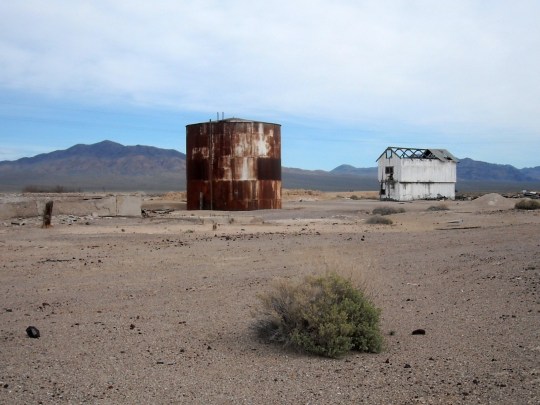#death valley junction
Text

Free-roaming horses run though sagebrush off Highway 127 near Death Valley Junction, California
Photograph: David Becker/Zuma Press/Shutterstock
#david becker#photographer#zuma press#shutterstock#horse#wildlife#animal#mammal#sagebrush#death valley junction#california#nature
21 notes
·
View notes
Text
Death Valley Railroad

View On WordPress
3 notes
·
View notes
Photo

Death Valley, California
7 notes
·
View notes
Text
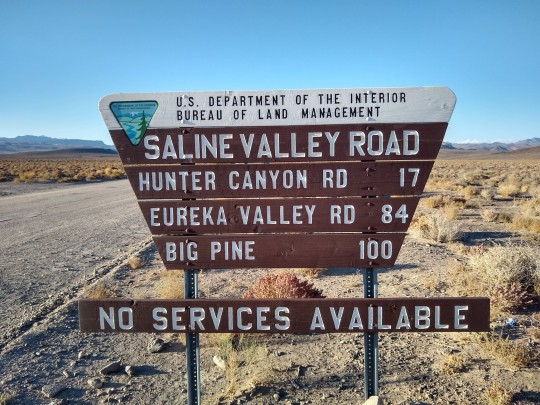







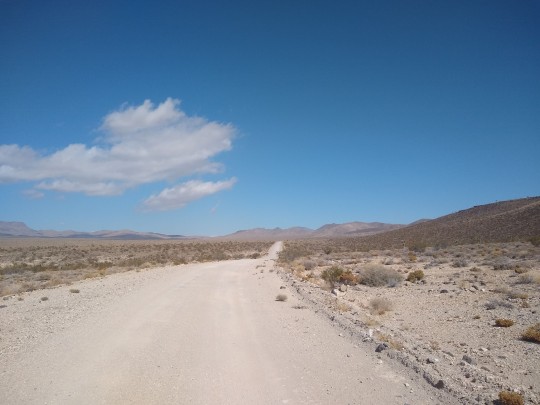
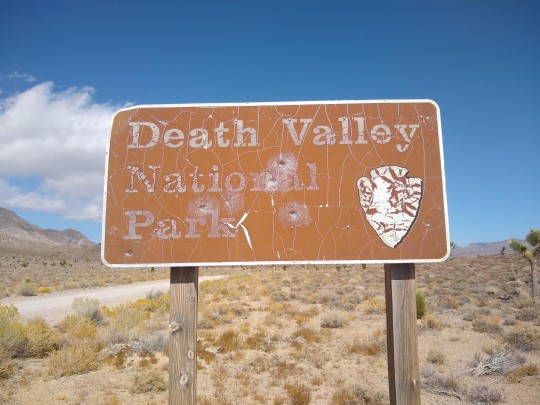
Saline Valley Access Road - 2019
#i have photos of teakettle junction but I can't post them without doxxing myself lol#photography#death valley#desert#California#sierra nevada
5 notes
·
View notes
Text
American Auto Trail-Bullfrog Goldfield Railroad (Beatty to Scottys Junction NV)
American Auto Trail-Bullfrog Goldfield Railroad (Beatty to Scottys Junction NV)
https://youtu.be/gYc-BXAof5A
This American auto trail begins travels north on U.S. 95 through Beatty, around the Bullfrog Mining District, to Scottys Junction in Nevada.

View On WordPress
#4K#american history#Beatty#Bullfrog#Death Valley#driving video#Goldfield#nevada#railroad#Rhyolite#road travel#Scottys Junction#slow travel#Tonopah
2 notes
·
View notes
Text

The History of Zombie Road
Zombie Road has quite a reputation as a place where shadowy figures and other non human entities have long been reported.
Gregory Myers of the Paranormal Task Force presents this piece on the history and deaths of one of the most haunted locations in the United States.
Within the urban sprawl of St. Louis lies a remote area called “Zombie Road”. Urban Legend tells a variety of eerie tales which include being host to ritualistic and occult practices which spawned inhuman and demonic entities while other tales tell of those who met their peculiar demise and still roam this desolate road in the afterlife.
“Zombie Road”, real name “Lawler Ford Road” is about 2 miles long through a valley of forest oak land hills and ends near the Meramec River in the Glencoe, MO area where it meets the newly established “Al Foster” trail.
The history of this area goes back to ancient Native American times where this was one of the few pathways cut by nature over the centuries through the bluffs to the Meramec River area just beyond them. It is believed that travelling ancient Native Americans used this pathway for foot travel and also quarried flint here for the making of various tools and weapons.
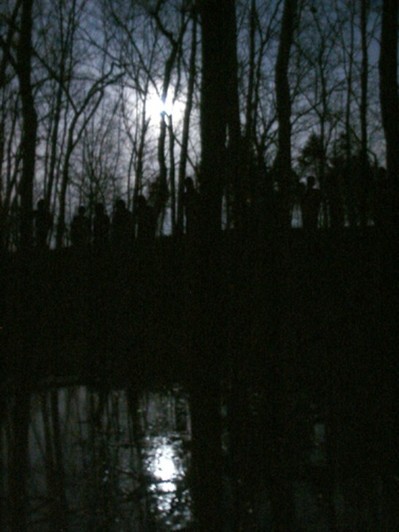
In the early 1800’s a Ferry (boat) was operated at the bottom area of this passage at times where a ford was located in the river for settlers and travellers to cross the Meramec River to the other side where the Lewis family owned much of the land. The origin of the road name is unknown to historians even today.
Ninian Hamilton a settler from Kentucky was the first settler to occupy and own land in this area in 1803. After his death in 1856, James E. Yeatman a prominent St. Louis citizen, a founder of the Mercantile Library and president of the Merchants Bank acquired the large parcel of land that Mr. Hamilton settled and owned.
The Pacific Railroad completed their railroad line from St. Louis to Pacific along the Meramec River in this area in the 1850’s. Della Hamilton the wife of Henry McCullough, who was Justice of the Peace for about thirty years and Judge of the County Court from 1849 to 1852, was struck and killed by a train in this area in 1876.
The first large scale gravel operations on the Meramec River began at what would become Yeatman junction in this area. Gravel was taken from the Meramec River and moved on rail cars into St. Louis. The first record of this operation is in the mid-1850’s. Later, steam dredges were used, to be supplanted by diesel or gasoline dredges in extracting gravel from the channel and from artificial lakes dug into the banks. This continued until the 1970’s.
From about 1900 until about 1945, Glencoe and this area was one of the resort communities of the Meramec River’s clubhouse era. Many of the homes were summer clubhouses, later converted to year round residences then lost to the great local floods of the 1990’s.
Some say this is called Zombie Road because the railroad workers who once worked here rise from their graves at times to roam about. Some insist that they have heard old time music, seen anomalous moving lights and other ghostly sightings from that forgotten era. Another tale tells of a patient nicknamed “Zombie” who escaped from a nearby mental facility never to be seen again. His blood soaked gown was later found lying upon the old road later named after him.
Other tales include one of an original settler who met their demise upon the railroad tracks. Another includes a pioneer who lost his wife in a poker game then went back to his homestead and took his own life. Many still report seeing these lonely spirits even today.
During the age of Prohibition a nearby town housed speak-easies and the summer homes of well known gangsters. Tales tell of individuals who were dealt a bad hand by such public enemies resulting in their permanent placement within the ground or bordering river to never be seen again.
The bordering river has tragically delivered many to the other side through the years. Children and adults alike have taken their last living breath within its dangerous waters before being found washed up on its shores. Even during this new millennium, several children met their demise one day within its banks.
The railroad still shows “Death hath no mercy” as many have met their final fate upon its tracks. Local lifelong residents can still remember multitudes of tragic occurrences dating back to the 1950’s. One of these occurred in the 1970’s when two teens were struck by an oncoming train. Some of the local residents were used in search parties to find the body parts scattered about the area.
During the 1990’s a mother and her five year old child were crossing a bridge when an oncoming train met them. The mother’s last action was pushing her five year old child off the bridge. The engineer was able to stop the train and save the child. Although the mother died, this is still one of the happiest endings to a story this area will provide.
More recent past has seen this area become refuge for those wanting privacy to practice the occult and other rituals. Who can really know what true doorways to the darkness or unknown were opened here.
During the 1960’s a couple in their late teens were on top of the bluffs overlooking the road below. The male somehow lost footing and during the fall caught his face in a fork of a small tree growing out from the side of the bluff. His face and scalp remained while the rest of him fell to his death upon the road below. Others have also met their demise from the high bluffs above.

The area has also seen its share of suicides and murders. In the 1970’s a hunter stumbled across a car still running at the end the road. Closer inspection revealed a hose running from the exhaust pipe to the inside of the car with the driver slumped over the steering wheel.
One can agree that there is no lack of legends or tragedies surrounding this area which can explain the bizarre and eerie encounters of those who visit. I was one who became truly intrigued and attracted by such lore and was determined to either prove or disprove the Urban Legends surrounding it.
Missouri Paranormal Research (now a division of Paranormal Task Force, Inc.), the paranormal investigative team I belong to, investigated this area on several occasions. Our visits converted many true skeptics into true believers of the paranormal. I was one of those the first time and even remarked “This was going to be like Winnie the Pooh looking for a ghost in 100 Acre Woods” prior to descending onto the old road.
Within an hour several people observed a human sized shadow figure as it descended upon them from a small bluff nearby. It then ran onto the road, stopped, then disappeared into the darkness of the night. Throughout the night others heard unexplained voices, were touched by the unseen and witnessed the unexplained. This was one night that everyone could conclude that indeed some Urban Legends actually are real!
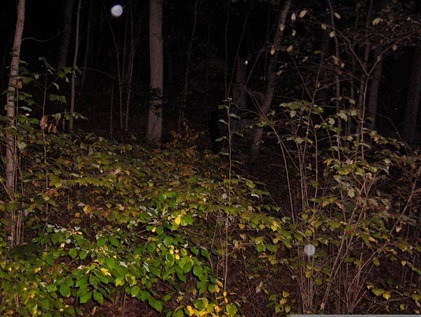
#history of zombie road#zombie road#ghost and hauntings#paranormal#ghost and spirits#haunted locations#haunted salem#myhauntedsalem#haunted roads
18 notes
·
View notes
Photo

Character Actor
Tom Fadden (January 6, 1895 – April 14, 1980) was an American actor. He performed on the legitimate stage, vaudeville, in films and on television during his long career.
Fadden was an early arrival on television. One of his first TV roles was that of Eben Kent, the earthman who adopts Kal-El on the inaugural episode of The Adventures of Superman. He appeared in other television shows during the decade, including recurring roles on Broken Arrow (1956–58) and Cimarron City (1958–59). Although he appeared in few films in the 1960s, he worked regularly on television during the decade, including Gunsmoke (in 1961 as “Enoch” in “A Man and A Day”, and a recurring role on Petticoat Junction. (Wikipedia)
His television credits include:
General Electric Theater
The Twentieth Century-Fox Hour
Four Star Playhouse
Hey, Jeannie!
State Trooper
Studio 57
Cavalcade of America
Schlitz Playhouse
Jayne Wyman Presents the Fireside Theatre
Code 3
Fury
Casey Jones
The Thin Man
The Californians
Trackdown
Lux Playhouse
Peter Gunn
Lawman
Maverick
Cheyenne
The Texan
Sugarfoot
Rawhide
Bourbon Street Beat
77 Sunset Strip
Riverboat
Westinghouse Playhouse
The Untouchables
Bronco
Mr. Ed
Laramie
87th Precinct
Death Valley Days
The Tall Man
Temple Houston
Perry Mason
The Legend of Jesse James
Green Acres
The Big Valley
Laredo
The Virginian
Run For Your Life
Bonanza
Daniel Boone
The Guns of Will Sonnett
Lancer
The Outcasts
3 notes
·
View notes
Text

Commercial District, Death Valley Scotty’s Junction, Nevada, 2013.
24 notes
·
View notes
Video
Devil’s Cornfield by James Marvin Phelps
Via Flickr:
Devil’s Cornfield Mesquite Sand Dunes Death Valley National Park California February 2024 Nestled between Stovepipe Wells and Beatty Junction along Highway 190, you'll discover the enigmatic Devil's Cornfield, just a stone's throw east of the Mesquite sand dunes. Here, the landscape is adorned with the distinctive presence of arrowweed (Pluchea sericea), an evergreen plant that weaves tales of its ancient use. Echoing its common name, this remarkable plant once served as the sturdy backbone for crafting arrows by Native Americans, adding a touch of history to the allure of this unique terrain.
#death valley#national park#landscape#photography#sand dunes#devils cornfield#arrowweed#sunrise#california#desert#sand#sky#clouds#james marvin phelps photography#flickr
3 notes
·
View notes
Photo

Death Valley Junction 92328 - California
Harry Snowden
#photographers on tumblr#bw#analog#film photography#film photographers#6x6#medium format#Yashica Mat 124G#blackandwhite#death valley#california#desert
57 notes
·
View notes
Text
Mysteries Surrounding Lost Souls Along National Road in Ohio County
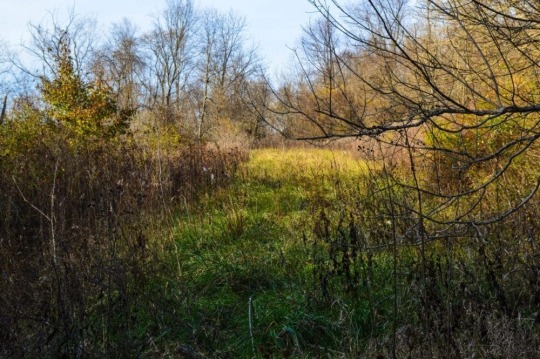
While growing up in the Triadelphia area I was always fascinated by many of the historical sites and buildings that I observed on my daily travels.
Entering the town and seeing the welcome signs which announce Triadelphia as the oldest town in West Virginia always made my mind wonder what this area would have been like to live in over 200 years ago. Triadelphia was incorporated on July 29, 1829, as the Village of Triadelphia by the Commonwealth of Virginia. Wheeling would not be incorporated until 1836.
Just the meaning of the town's name alone is quite interesting too. The origin of Triadelphia’s name is derived from three settlers, Jonathan Link, Presley Peak, and William Hawkins who were killed by a band of 20 Indians along Middle Wheeling Creek in 1781.
As I explain to my History of Wheeling students at Wheeling Park High School, “The tri-part of the name is easy to figure out, but what does adelphia mean?” Wheeling has a strong Greek heritage and every year a few students always speak up and say “adelphia means brother!” And there you go, Triadelphia is named after three friends or “brothers” who perished there during the frontier era.
While traveling east through Triadelphia on the National Road you can find historic brick homes dating back to the early days of the National Road, remnants of the old Valley Camp Coal mine, and shortly after you encounter the unincorporated area of Roney’s Point.
The Old Stone House at the corner was a tavern that dates back to 1818, but has since been demolished.
The Legends
Roney’s Point is sort of a junction that connects you to Dallas Pike Road and, of course, what most people know today as a backway to The Highlands or Interstate 70. Roney’s Point, though, is so much more. I’m sure many of you notice the Old Stone House at the corner that dates back to 1818 as a tavern. It’s since been demolished, but there were also two other structures nearby that housed travelers.
There was also the old Southern States Co-Op that served farmers and residents throughout the area, and when the railroad was still running deliveries could be picked up at Roney’s Point.
Only remnants of the Schmulbach Mansion remain on Roney's Point these days.
At the junction of Roney’s Point, if you turn onto Point Run Road after a short ride you will encounter Country Farm Road which leads you to the ruins of an estate that was once owned by Henry Schmulbach. After his death the property was sold to the county and used as a poor farm, tuberculosis hospital, and later a mental hospital was built on site.
I plan on telling more of the Schmulbach story another time, but for this article I would like to focus on the Roney’s Point Cemetery that is located on four acres of the property. Residents of the Ohio County poor farm, tuberculosis hospital, and paupers were buried in this cemetery starting sometime after 1916. Approximately 59 graves that were moved from the Peninsula Cemetery in Wheeling were also reinterred at Roney’s Point to make room for Interstate 70 just east of the tunnels in 1964.
I had visited the cemetery for the first time on May 8, 2008, and after doing some more research recently of the property I was motivated to see what has changed in the cemetery since then.
This is how the entrance to the County Farm Cemetery appeared on May 2008.
Resting Souls
In 2008, the gates still remained the entrance to the cemetery.
So, on a warm May Spring day, I parked along Point Run Road with Brittany Fehr as my extra pair of eyes to locate the cemetery and explore. At the base of the cemetery, we walked through a small field. Someone had recently mowed a wide path through it which made walking through this part easy. In this field, I remember seeing a few grave markers, but on this day we could not locate them.
As you enter the woods and walk the path which was probably once a small road used to maintain the cemetery we found small cement markers with numbers on them. The markers appear as if they were tossed about on the ground, but after further examination, most have been disturbed from the growth of trees, brush, and years of neglect.
Our hike into the woods was more difficult than my first visit in 2008. Fallen trees and the overgrowth of briers made the trek a challenge. I was convinced that I led us too far into the woods and missed the grave markers I saw in 2008. We persistently kept pushing forward, though, and were able to discover an area that Brittany could tell that at one time was probably a clearing of property. After pushing through more brush we were able to discover small metal markers designating the location of those reinterred at Roney’s Point from the Peninsula Cemetery.
A walk through this brush lead to Peninsula Cemetery grave markers
The metal markers read “Unknown - Peninsula Cemetery - Grave # 713,” for example. These markers represent some of the 59 graves that were removed from the Peninsula and relocated to Roney’s Point. What has always struck me as odd is why the markers say “unknown.” Glenna Dillion’s Book, The Cemeteries of Ohio County provides a description and history of the cemetery, along with a list of those buried at the cemetery.
Grave #713 is not unknown at all. It represents John Bartkovich who was interred on October 19, 1966. The records also state that he was not an inmate and White.
Bartkovich was born on June 24, 1892 in Poland, served in the Polish army, and his death certificate indicates that he spent most of his life as a coal miner. He resided at 2148 Main Street at his time of death. It was unknown if he was married or widowed when he passed away. What remains a mystery is why the marker says Peninsula Cemetery when his death certificate says he was interred at the Roney’s Point Cemetery. It’s likely he was interred at Roney’s Point as a pauper, although that fact is not specified anywhere.
This is one of only a few grave sites that has remained in clear view.
Another interesting point to make about those buried at the Roney’s Point Cemetery is the story of Lucy Zantanna. Zantanna has a monument at the cemetery that is dated 1913, the year that Schmulbach moved into his Roney’s Point mansion. Zantanna died April 22, 1913 in the rear of a home at 1204 McColloch Street. She was married, a housewife, and died from food poisoning. Zantanna ate raw oysters that had been kept in the family refrigerator Saturday afternoon until late Sunday without ice. According to her obituary, “When they were removed it is said they had a disagreeable odor but Mrs. Zantanna ate them, although others refused to do so.”
Within a few hours she became ill; a doctor was called who made every effort to save her, but she died shortly after. Zantanna was just 25 years old.
Zantanna was interred at the Peninsula Cemetery. Zantanna’s monument must have been moved around 1964 to Roney’s Point. What remains a mystery is where all monuments moved, and what is the story with those metal markers?
Upon further research, Zantanna had a 6-month-old child that died March 22, 1911 and was interred in the Peninsula Cemetery. Zantanna’s husband John remarried in 1915 and moved to his wife's hometown in Pennsylvania. What’s unknown is where Zantanna’s daughter is now buried. Still in the Peninsula Cemetery? Possibly moved to another local cemetery? Records indicate she was not reinterred at Roney’s Point. This is another mystery for Brittany and me to solve.
A good portion of the Peninsula Cemetery, one of the oldest in the city, was removed to make way for the interstate.
The Road Goes Through
In September of 1963, it was announced in 60 days 1,100 graves would be disinterred by 14 experts in the field of moving graves to make room for Interstate 70 just east of Wheeling Tunnel. According to state law, it was also required that a certified mortician be on hand to oversee the project.
Cemeteries used for reinterment included Greenwood, Mt. Olivet, Mt. Zion, and the county graveyard at Roney’s Point. The article stated that a marker would be placed on each grave at its new location, known or unknown. It was also stated that all monuments would be reset on new foundations. That movement probably occurred in late 1963 and was finished in 1964.
Glenna Dillon’s research revealed that the last internment according to Ohio County records at Roney’s Point was in 1987, but her research all discovered internments as late as 1993.
Although the current state of the cemetery is in poor condition, it would be much worse if it weren't for the efforts of Gary Kestner. In 1998, Kester spearheaded a movement to clean up the cemetery grounds and make an effort to keep the gravesites clear of future brush and tree growth. Kester sought help from the local community with clean-up, restoration of the wrought iron gate, and a new sign was placed at the entrance.
Today, the sign and gate are gone, and every year the woods claim a little more of the cemetery's history.
This is just a small glimpse of the history that surrounds the Triadelphia and Roney’s Point area. I plan on researching future topics about this area and the Roney’s Point Cemetery. In my eyes, the cemetery is important because it tells the story of the sick, the unknown, the poor, those who succumbed to tragedy. Their story is important and it must be told and remembered.
Ryan Stanton is a 2002 graduate of Wheeling Park High School. In 2006, he graduated from West Liberty State College with a bachelor’s degree in history and later earned a master’s degree in social studies education from West Virginia University. For 12 years, Ryan has been a social studies teacher at Wheeling Park High School where he teaches college-level U.S. Government and Politics and the History of Wheeling.
Read the full article
4 notes
·
View notes
Note
015. the wine cellar of a large mansion . / i want you to know, you asked for this.
↪ 𝑺𝑬𝑻𝑻𝑰𝑵𝑮 𝑷𝑹𝑶𝑴𝑷𝑻𝑺 : @tahitiwoke.
it's two am on a saturday evening - or rather, a sunday morning. the kind that a few months ago would have meant waking up in about three hours, two and a half for phillip, who was always diligent in every aspect of his life, including the ones that she sometimes wished he wouldn't be. it's been a long time since she'd been able to amuse herself more with sitting on his lower back for fifty push - ups than she would have with an extra thirty minutes in bed, just lying there, more and more often because, in all honesty, they'd been getting old.
but, that's life. you make these kinds of concessions, when you're in love.
she flips the light at the top of the stairs leading down into the cellar and there's a hum that comes in reply, an audible hum, indicative of the insane levels of energy that this massive peacock - display of unconscionable wealth siphons, and this is just the cellar. there had been a time when claire had considered herself to be well - to - do. she no longer considers that a fact. not when she's now able, owed entirely to phillip's dime, to waif down the elegantly minimalist staircase into a wine cellar filled absolutely top to bottom with wines that would have gotten her impeached for even thinking of placing on the white house menu for one night only. she laughs to herself, alone, and apart from the fact of that word, alone, there is another problem with this picture.
claire's already been down here a few times, tonight. in fact, the stem of her evidentiary last glass is still slotted between her fingers with the cup cradled in her palm as she reaches the bottom step and finds her socked feet on the beautiful marble, and somewhere upstairs on the massive island in the spacious kitchen, with the vaulted ceiling, her phone is buzzing with a call from christopher brady, who she really should speak to. and she will. she will, just not right now.
in the meantime though, she is going to keep making use of all this opulence that she has started to hate phillip for, now that he's dead.
she's slow in pacing between the racks, eyeing label after label through the glass doors that wouldn't ever dream of fogging over, because the entire level is temperature controlled. she runs a finger over the surface of the door closest to her and is reminded in a brief little flicker of what it had felt like to have her back pressed against it the first time he'd brought her down to see it, the chill of the glass raising the hairs on her arms as his mouth had found the junction of her neck and shoulder, and she pulls her hand away reflexively. claire moves on to the next door, and the next, until she stands in front of the reds which had always been her intention, because white was too flimsy, too light, too apéritif to handle what she requires of it, which is to help stomach death, which is to help drown the little piece of her that wants to kill him herself for making her do this again. so no, white would never do. she's eyeing down a particularly pretentious looking cabernet sauvignon which she has no doubt is straight from napa valley and well over what he'd once called the modest price point of three thousand dollars, and she opens the door with a flourish that is for no one, because no one is there to see it.
there are a lot of things that claire has had to come to terms with, in her life. she'd lived a full one, she'd looked her own demise in the face more than once and found a way to move beyond it, she'd learned to swallow down francis' death, she'd learned to swallow down the deaths she'd delivered with her own hands either literally or metaphoric, with the signing of a directive. nothing prepares a person for what it is like to be sixty six and still in too good of shape, good enough that you might last another twenty years : mourn, another twenty years. nothing prepares for what it's like to not be able to listen to a song that you've loved for more than forty years because you cannot hear it play without thinking of someone you knew for only half that long. nothing prepares for what it's like to live alone in a beach house in cape cod that retailed for a few million dollars on its own without the enhancements he'd made to it because jesus christ, phil could not ever be frugal or rational, or —
she flinches, for having thought of him as phil. for being reminded of yet another lapse in her traditions, another hangup he’d unwittingly helped her unlearn very much by accident. that ring is getting heavier all the time.
claire turns away and lets the door swing shut, carrying the bottle back with her toward the stairs and climbing up them, leaving the light on because it doesn't matter, because the light bill, if she cared to care, is on autopay from one of his numerous checking accounts which she has been made excruciatingly aware by his accountant that she has full control of to do with what she will. i understand the two of you never married. the suit ( phillip would have called him that ) had said. observed? pried, claire finally settles. because it had been a pry. one she hadn't bothered to offer any clarification on.
she makes her way back to the kitchen and ignores the small but steadily growing collection of bottles sitting on the counter, setting down the glass in her hand and the newest bottle in order to pick up her phone, eyeing the missed notifications for a moment before typing out a single text to the one that she actually cares about.
to: christopher brady.
sorry i missed your call, winding down for the night. talk tomorrow?
claire doesn't wait for his response, setting the phone back on the counter face down and leaving it even though it vibrates against her fingers almost immediately. she picks up the corkscrew on the counter and twists it with what can only be considered aggression into the stopper at the neck of the bottle and within a few moments she's walking with the unobstructed wine and a newly full glass out onto the patio that overlooks the beach, that overlooks the pier, that overlooks the place where she'd watched the sunset sink into the cresting waves and said nothing, i'm just happy, just a few years before. she brings the glass to her lips and drinks deeply, and she is not savoring it the way that one does with a four thousand dollar bottle of wine. it's just a drink. the way that this is just a house, and this is just a death, and she will have to get over it one way or another, eventually.
his ashes are still sitting in the comically nondescript box she'd received them in. there had been a condolence card taped to the cardboard, she had opened it and there had been an urn and inside the urn there had been a bag, and she'd closed it and put it away underneath his side of the bed and that's where it had stayed. the ghost of it is sleeping with her now, and sometimes she has the most intense urge to leave them there, because it's possible if she does that the emptiness will never have a chance to feel permanent but instead keep dangling between complete and incomplete as it has been so far. but claire is not staying in cape cod. was never going to stay in cape cod, because there is no corner of that house that does not remind her of him, there is no contractor she could pay to cut him out of the place and neither would she want to. it's important to know that this black mood that's overtaken her is not just because he is dead, or because he'd left her so much more than any person should ever have to look after, but because five days after he'd died she'd found an invoice on his computer for a reserved dock in the bass river marina for a vessel, and it didn't take her long to dig up why in the wake of the spiral that had caused, and in a little folder simply called claire she'd found a picture of a small downeaster and damn it if the name painted on the side of it clear as day in a pale blue that matched the curtains she'd picked for the bay window downstairs wasn't Alexa.
she'd cried. it was a lot, and she wasn't proud of it, and when she stopped it had felt foolish because it had been something sweet between them, and she remembers what he'd said like it was yesterday, and not just because she's been obsessively keyword searching their old messages trying to stave off the growing feeling of rot in the pit of her stomach.
from: phillip coulson.
[6:33 AM JAN 2023] It's funny you know. My mother used to say my Dad was a good man in a storm, that he wasn't kind or sweet or particularly loveable, but that he fought for the things he had and was steady when the bad stuff came rolling in. I always wanted to be like that.
[6:34 AM JAN 2023] It's a good song. And I'm really flattered? Maybe that's not the right word. Glad? That you think that about me
she takes another sip from the edge of the glass as it scrolls through her mind, and closes her eyes, standing under the fucking flood light he'd installed on the back of the house which is motion sensitive and which she has sometimes managed to stand under for long enough without moving in the last few days that it has forgotten her completely and plunged her into a darkness that is comforting in that it seems to match the one inside her.
tomorrow, she's going to the marina. tomorrow she's dragging his ashes from under the bed and taking them out onto his boat, or her boat, as his inheritor, since it cannot now be theirs. since nothing can be. tomorrow she'll hire someone and pay them more than anyone could ever call appropriate to take her out into the middle of the bay and she's going to dump them there because he told her that same night years ago that all he'd ever wanted was to matter, to have an impact, and she can't think of anywhere he deserves to be less than he deserves to be kept under the underside of a bed because she cannot let him go. so, tomorrow. tomorrow she'll take his downeaster out to the gulf of maine and dump his dust into the salt water because he'd done what he had to and he'd mattered to her more than either of them had ever meant him to and because yes, phillip.
a good captain can fall asleep.
#death tw /#alcohol mention /#tahitiwoke#post presidency tbt.#please do not ever try me again.#this is so long..#anyways#this is set in like 10 years when sam fucking murders phil Again.
11 notes
·
View notes
Photo

Death Valley Junction, California
4 notes
·
View notes
Text
Vecna's Generals - The Civilians
CW - talk of occult practice (namely human sacrifice) and m*rder
The formation of the Valley has destroyed downtown Hawkins. The roads are nigh impossibile to traverse, and the smog coming from the cracks makes breathing a hazard without protection. Electricity is nonexistent in the junction, and connection is hardly clearer for the rest of the town.
Dozens of people died in the opening of the Valley, either from the chasm itself or other complications due to the tremors. Since the event, residents living near the center or the ends of the Valley have all evacuated. Most of the town, however, have opted to stay. For some, they're too stubborn to even consider leaving their homes, land, or shops. Others simply aren't as affected by the side effects of this near apocalypse, and are able to live within their means with rations and the few remaining stores. A few choose to stay only in honor of those lost to the Valley's formation. But no matter the reason, every single one of these civilians await further governmental response to their plight. Whether it's for answers to their neverending questions, a sudden fix, or a forced relocation, they're not entirely sure.
The government has come out of hiding about the Upside Down, releasing to the public a watered down version of the truth. They explain much of everything - from Will Byers's disappearance, to the disbanding of Hawkins Lab, to the fall of Starcourt - but still blame most of it on "Russian and Satanic influence". They do appropriately pit the blame of the most recent events on Henry Creel, however are forced to violently twist the story. The public wouldn't possibly believe the truth, so the changes are made in hopes of convincing them. The first public release of this statement is as follows:
"Henry Creel was a cultist that, after moving to Hawkins, Indiana, at a young age, began to show signs of demonic possession and insanity. His resulting actions drove his father - Victor Creel - to commit the infamous murders of 1959, and the young boy thus went into hiding after faking his death. He would continue his demonic practice, his summonings eventually being targeted towards Hawkins and it's residents in late 1983. He then returned to the town in early 1986 to preform an act of sacrifice. Using four young teenagers, he hoped to join together Hawkins and Hell. He succeeded, but lost his own life in the process. Investigation is still ongoing."
And yet, it isn't so readily accepted. Because the initial statement didn't mention him, the masses still want to blame Eddie Munson as their primary target. Even after a change confirmed his innocence and death, it wasn't enough proof for them. Some do attempt to believe the statement, though twisting it further to fit their beliefs. These people say that Creel used Munson as a pawn to inact the sacrificing for him, then killed the kid himself. Others add on that every single one of the teens involved were integrated into Creel's cult, and willingly allowed Munson to kill them. There's even a few that reject the former idea, and instead theorize that Jason Carver was also a pawn influenced by Munson and Creel. No matter the rumors or how they're worded, Eddie is still phrased as a villain in every single one.
Which does no good for his friends. The remaining Corroded Coffin/Hellfire Club members are forced into hiding to escape the crowds. The boys and their families had tried to argue in defense of their friend, but the resulting accusations and threats towards them soon became too dangerous. The boys found refuge in their old club room at the high school at first, before eventually agreeing with their families to abandon the town entirely. However, that's not before the boys take one final stand in their friend's name. They vandalise the town church; hanging a torn Hellfire shirt on the front doors, and spray painting "JUSTICE FOR EDDIE MUNSON" along the outer walls. It's layered on too thick for it to be wiped away; an open revolution.
And underneath all of that is the missing persons story. The one that arose suddenly, only five days after the formation of the Valley, telling of the eight people that vanished that day. The victims had all been residing in the safer areas of Hawkins, and had no relation to each other. Families and friends of each of the victims claim that they'd had no prior symptoms of illness, physical or mental, and the scenes of the crime were clear of evidence. There was no cause, no suspicion, no witnesses. They were simply there the night before, but gone the morning after...
The town is in shambles following Vecna's final attack. The people are restless, the government is practically useless, and the looming threat of the Upside Down is undeniable yet unfathomable. Nobody knows what's coming, and they aren't sure if they want to.
#tw mentions of death#cw cults#if i need to add more warnings please let me know#i tried to get all of it but if i missed something i'll change it#Vecna's Generals#stranger things au#stranger things fanfiction#stranger things fic#stranger things#tw murder
2 notes
·
View notes


